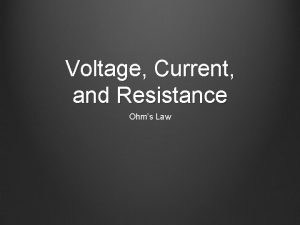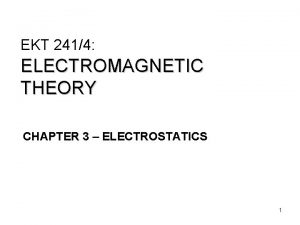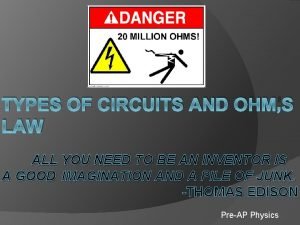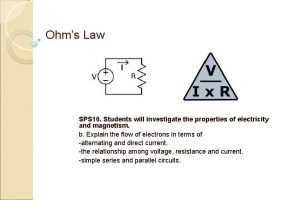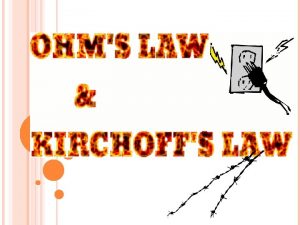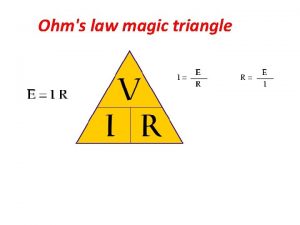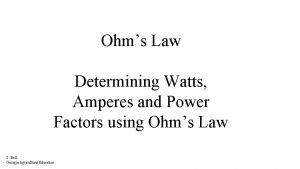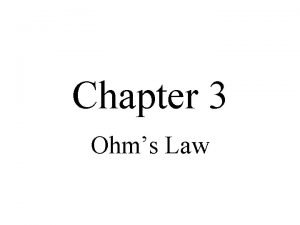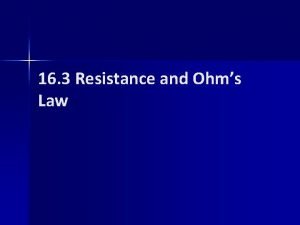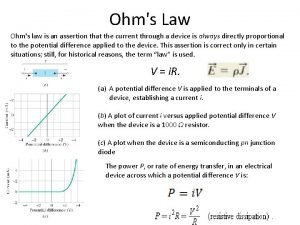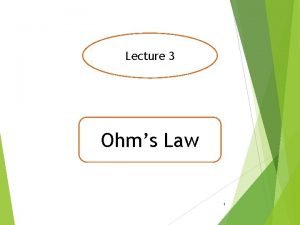Principles of electrical science Ohms law Ohms Law









- Slides: 9

Principles of electrical science Ohm’s law

Ohm’s Law Current • The uniform flow of electrons through a conductor is referred to as electric current. • The unit of electric current is the ampere (A). • In formulae the symbol for electric current is I.

Ohm’s Law Electromotive force (EMF) • The EMF provides a difference in potential between two open terminals of an electrical circuit. When the circuit is complete, this potential difference causes the electrons to flow in a uniform direction around the circuit and produce a flow of current. • The unit of EMF is the volt (V). • In formulae the symbol for EMF is V.

Ohm’s Law Resistance • Every circuit presents some opposition to the flow of current in the electric circuit, which has to be overcome by the electrical pressure applied. This opposition is called resistance. • The unit of resistance is ohm (Ω). • In formulae the symbol for resistance is R.

Ohm’s Law The current flowing in any circuit is directly proportional to the applied voltage and inversely proportional to the resistance of the circuit, provided that the temperature of the circuit remains constant. V=I×R I=V R R=V I

Example 1 An EMF of 10 volts is applied to a resistance of 20Ω. Calculate the current that will flow. We need to find the formula for I so we can use the Ohm’s Law triangle. Always draw a small circuit diagram, as this will help you to visualise the situation. Covering I gives us: I = V R Put some figures in: = 10 20 Calculate through to give: = 0. 5 A

Example 2 Calculate the applied EMF when 2 amperes flows through a resistance of 40Ω. We need to find the formula for V so we can use the Ohm’s law triangle. Always draw a small circuit diagram, as this will help you to visualise the situation. Covering V gives us: V = I × R Put some figures in: = 2 × 40 Calculate through to give: = 80 volts

Example 3 When an EMF of 50 volts is applied to a circuit, a current of 5 amperes flows. Calculate the resistance of the circuit. We need to find the formula for R so we can use the Ohm’s law triangle. Always draw a small circuit diagram, as this will help you to visualise the situation. Covering R gives us: R = V I Put some figures in: = 50/5 Calculate through to give: = 10 ohms

Principles of electrical science The end
